|
Nobility of the World Volume VIII - Brazil - Mexico The History and Register of the Mexican nobility refers to the titled nobles and untitled gentry families of Mexico. Most of the descendants
of these families still live in Mexico today, while others can also be found in Europe and other countries. With the victories
of the Mexican Republics over the monarchies of the First Mexican Empire, headed by Agustín I, and the Second
Mexican Empire, under Maximilian I and the writing of the Mexican Constitution of 1917 titles of nobility
in Mexico were henceforth legally abolished in Mexico. 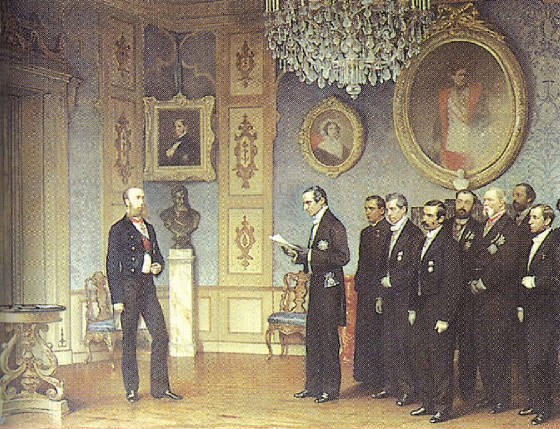 A
Mexican deputation, including many members of the Mexican nobility, offering the Mexican throne toArchduke Maximilian. From
the pre-Hispanic era, and stretching from the viceregal and colonial periods under theHabsburgs and Bourbons,
to the First and Second Mexican Empires and beyond, these families played vital roles in the history of Mexico.
There are several periods in Mexico's modern history in which families were granted noble status and given titles.
While titles were granted in Mexico itself, other families brought with them their old titles from Europe. Mexicans
who by marriage to titled foreigners or through outright purchase, acquired titles of nobility from European countries excluding Spain or
the Vatican. These were primarily Italian and German titles, with some rare exceptions. At the beginning of the nineteenth century, the Mexican aristocracy-both titled and untitled-consisted
of approximately 4% of Mexico's population, or approximately 200,000 individuals. Signers of the Mexican Declaration of Independence
included: the Marqués de San Juan de Rayas, the Marqués de Salvatierra, the Marqués de Salinas del Río
Pisuerga, the Conde de Santa María de Regla, the Marqués de la Cadena, the Marqués de San Miguel de Aguayo,
among others. Leading families active in 19th c. politics, the economy, the clergy, arts and culture included: Romero de Terreros,
Rincón Gallardo, Pérez Gálvez, Rul, Vivanco, Canal, Cañedo, Fernández de Jáuregui,
Obando, Gómez de Parada, Pérez de Salazar, Valdivieso, Fagoaga, Castañiza, Gómez de la Cortina,
Moncada, Diez de Sollano, Caserta, Trebuesto, García de Teruel, Vizcarra, Cervantes, Rábago, Sardaneta, Ozta,
Azcárate, Samaniego del Castillo, Cosío, Sánchez de Tagle, Hurtado de Mendoza, López Portillo,
García Pimentel, Villaurrutia, among others. Historically, many of these Mexican families married into
European nobility and some of these unions have produced figures such as Rainier III, Prince of Monaco and Elena
Poniatowska, whose family claims the throne of the Kingdom of Poland. Other families who have married into European nobility
include the Gutiérrez de Estradas, the Polignacs, and the Iturbides-the Head of the Imperial House of Mexico in exile, Maximilian
von Götzen-Itúrbide, is married to a member of the Venetian and Croatian nobility. 
The Indigenous
Nobility of Mexico Moctezuma II's royal descendants weregranted titles
in Mexico and Spain. The Aztecs and other Indigenous
peoples in Mexico had a system of hereditary aristocracy in place when the Spanish conquered their empires. The Spaniards
respected this system and added to it, resulting in many unions between Aztec and Spanish nobility. Descendents
of the elites of pre-Columbian Mexico who received these distinctions included the heirs of the Aztec ruler Moctezuma
II; That family became known as the condes de Moctezuma. Their descendants, who still reside in Spain, became a part
of the Spanish peerage. They later receivedgrandeza and became Duques de Moctezuma. A branch of their family, on
the female side, continued to receive an annual payment from the Mexican government in the amount of some 500 Ducats, gold,
until 1938, as part of a contract signed in the 16th c. granting Mexico City access to water and lumber on family property.
Numerous other Indigenous elites collaborated with the conquest, earning noble titles and privileges. Most notably, all theTlaxcallans whom
resettled into northern Mexico, became hidalgos. 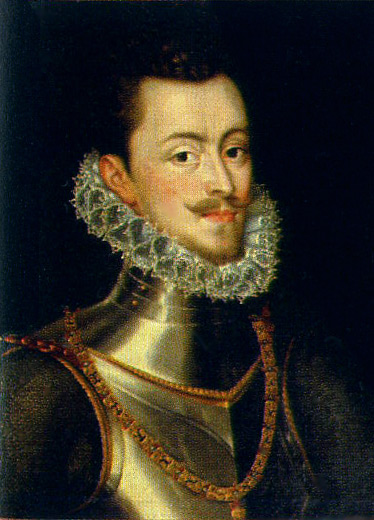 The Titles
in New Spain and Early Republican of Mexico Families who received a título de
Castilla during the Colonial period were the first to be granted European noble titles in Mexico. One of the first was the Conquistador Hernán
Cortés, who was granted the title of the Marqués del Valle de Oaxaca. Approximately 130 such titles were held
by Spaniards born or resident in New Spain. Main centers of population included Mexico City, Puebla, Querétaro, San
Miguel de Allende, Guanajuato, Guadalajara, and Morelia (Valladolid). At independence, a few princely dignities
were accorded the Imperial family's relations and three titles of nobility-the latter already under application with the Spanish
government-were recognized by the Congress of the Mexican Empire, such as the Marqués de Samaniego del Castillo. Knighthoods
were also created, most notably, of Guadalupe. Over the nineteenth century, others received pontifical titles of nobility,
and through loopholes in Spanish law, had these titles recognized as títulos de Castilla; these are known as títulos
negros and include the titles of the marqués de Barrón, conde de Subervielle, conde del Valle (Fernández
del Valle family), duquesa de Mier, and others. Many of these families were part of the hidalgo class. Some families,
after Mexican Independence, received títulos de Castilla from the Spanish monarch directly, such as the duque
de Regla and the duquesa de Prim, or indirectly, through marriage to individuals holding these titles, such as the duque de
Castroterreño or the Escandón family members who subsequently became duques de Montellano, marqueses de Villavieja. Some families
of pure Amerindian ancestry, such as the Mixtec Villagómez family, were among the richest landowners
in New Spain. Despite being part of the colonial elite after the conquest, the Villagómez retained their Mixtec
identity, speaking the Mixtec language and keeping a collection of Mixtec codices. 
H.I.M. Empress
Ana María - Consort of Agustin I of Mexico. The First and Second Mexican Empires Many families
also received a title of nobility from the regencies and/or Congresses of the First or Second Empire. During the First Mexican
Republic, after the end of the First Mexican Empire, many of the old families of the nobility lived as common citizens,
but appended the prefix "ex-" to their titles, using them in their formal signatures, grave inscriptions, and portraits.
Afterwards, during the Second Mexican Empire, under Maximilian I of Mexico of the House of Habsburg-Lorraine,
the nobility was resurgent. Some of these families granted titles during these periods were the Iturbides-whose Basque ancestors
had been ennobled by King Juan II of Aragon-,the Samaniego del Castillos, and the Marquis de la Cadena. José Manuel
Velázquez de la Cadena is listed in the Soberana Junta Provisional Governante del Imperio Mexicano. (Ref. La Calle
de Cadena en Mexico, p. 1-46, Guillermo Porras Munoz). De la Cadena relations fled to South Texas in 1800 and to Louisiana
after the fall of Maximillian and Carlota. This branch married into the Baron d'Ivry family and their descendants relocated
to Paris, France in the 1800s. Other branches of the family remained in Nuevo León until the last Mexican Revolution,
but then fled to South Texas. 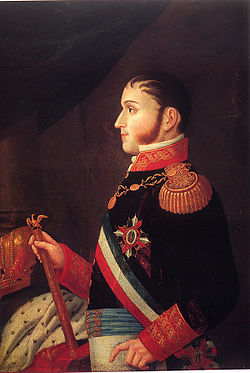 The Modern
Period During the Porfiriato, the Mexican aristocracy was very active in politics. Prince Agustín de Iturbide
y Green, Maximilian's adopted son, was naively prompted by reactionaries into making public pronouncements against Díaz,
who promptly exiled him after serving a brief sentence given him by a martial court. Don Agustín died in exile in the
U.S., where he taught as a Spanish professor at Georgetown University. Members of the Rincón Gallardo, Fagoaga and
Pimentel families (marqués de Guadalupe,marqués del Apartado and conde de Heras Soto) were active in Mexico
City government, the Ministry of Foreign Affairs, the armed forces, and the Academia de la Lengua or the Sociedad de Geografía
e Historia. Around 1902, Don Ricardo Ortega y Pérez Gallardo, Mexico's unofficial King of Arms commenced
work on a project to prepare an encyclopedic repertoire of Mexico's aristocracy. The resulting Historia genealógica
de las familias más antiguas de México, or Genealogical History of the Oldest Families of Mexico-an Almanach
de Gotha of sorts-listed the histories of a select group of families residing in Mexico who held Habsburg, Bourbon, Mexican,
and Pontifical titles and patents of nobility, entailments, and knighthoods; it also listed those notables who had accepted
honours from foreign sovereigns and republics. After the revolution, the nobility migrated to Mexico City
in large numbers, although many entered the professional and educated classes. A number found employment in the diplomatic
service, arts and letters, public relations, or as representatives of transnational corporations. Art history and antiquities
have attracted many, such as the marqués de San Francisco, don Manuel Romero de Terreros, among others. While monarchists
organized masses for the repose of Maximilian well into the 20th century at the Church of La Profesa, and were kept under
surveillance by the Ministry of the Interior. Many of them greeted the arrival of the Royal Family in 1977-the first such
visit in Mexico's history-and purportedly feuded over the order of precedence at receptions. Wealthy Mexican
families have attempted to obtain titles of nobility from Spain since the 1980s, when relations were re-established, but ran
afoul of the law. The appeal of and fascination with the nobility in Mexico, without a doubt, has not subsided. Countless
soap operas, novels, films, museum exhibits, and now, websites, are devoted to the topic. 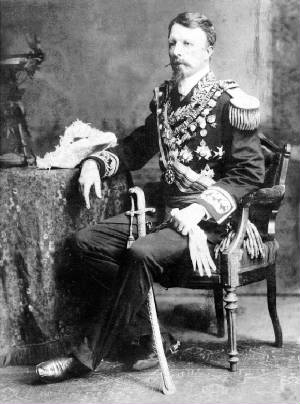
The
Nobility Of Brazil
Brazilian nobility refers to the titled nobles and fidalgo families
of Brazil. It began in the early 19th century duringColonial Brazil and lasted until the end of the Empire
of Brazil in 1889. The noble titles were a sign of political poweramong the elite. Some of the nobles were direct
descendants of the Portuguese nobility, and even of the high nobility, especially the families that arrived during the first
centuries of the colonization of Bahia, Sergipe,Pernambuco, Rio de Janeiro and São Paulo.
The elevation of Brazil to the status of kingdom, under the United Kingdom of Portugal, Brazil and the Algarves,
in 1815, led to the creation of the first Brazilian noble titles. With theIndependence of Brazil from Portugal in
1822, the Empire of Brazil established its own nobility. It was constituted of the titles of Duke, Marquis, Count, Viscount and Baron;
and by honorific orders, decorations, and medals. Between 1831 and 1840, there were nominations to titles and
honors, on account of the Regency Law, a constitutional correction approved during the Trine Provisional Regency. During the
reign of Pedro II, the advent of the commercialization of coffee, it was the great coffee-growers who started to
collect such titles, being acquaintances of the coffee barons. According to Affonso de Taunay, around 300 holders had their
income linked to coffee: farmers, bankers and traders. With the proclamation of the Brazilian republic, in 1889,
the Brazilian nobility was extinguished. It was also prohibited, under penalty of accusation of high treason and
the suspension of political rights, to accept noble titles and foreign decorations without the proper permission of the
State. Particularly, the nobles of greater distinction, by respect and tradition, were allowed to use their titles during
the republican regime; a well-known example is theBaron of Rio Branco. The Brazilian Nobility in 1869
Duke 1 Marquis 11 Count 11 Viscount 36 Baron 180 Total 239 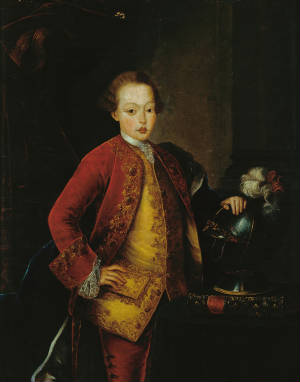 The Famous
Members of Brazilian Nobility - Domitila de Castro do Canto e Melo, the Marchioness of Santos
- José Maria da Silva Paranhos Júnior, the Baron of Rio Branco
- Luís Alves de Lima e Silva, the Duke of Caxias
- Manuel Luís Osório, the Marquis of Erval
- Manuel Marques de Sousa, the Count of Porto Alegre
References
*
Ladd, Doris M., The Mexican Nobility at Independence, 1780-1826. Institute of Latin American Studies, University of Texas,
1976. * Fernández de Recas, Guillermo S. Cacicazgos y Nobiliario Indígena de la Nueva
España' (Indian Chiefs and Nobility of New Spain). México, D.F.: Instituto Bibliográfico Mexicano, 196l.
(FHL book 972 F3f.) * Macias-González, Victor
M. "The Mexican Aristocracy in the Porfirian Foreign Service." Book Manuscript Summary, available online at: http://www.lclark.edu/~tepo/Papers/macias.pdf * Muñoz Altea, Fernando. Blasones y Apellidos (Coats of Arms and
Noble surnames). México: Joaquín Porrúa, S.A. de C.V., 1987. (FHL book 972 D6m.) * Ortega y Pérez Gallardo,
Ricardo. Historia Genealógica de las Familias más Antiguas de México (Genealogical History of the Oldest
Families of Mexico). Austin, Texas: Golightly-Payne-Coon Company, 1957. (FHL films 0283555-0283556.)*Schwarcz,
Lilia Moritz. As barbas do Imperador: D. Pedro II, um monarca nos trópicos. 2. Ed. São Paulo: Companhia das
Letras, 1998. (Portuguese)
|

